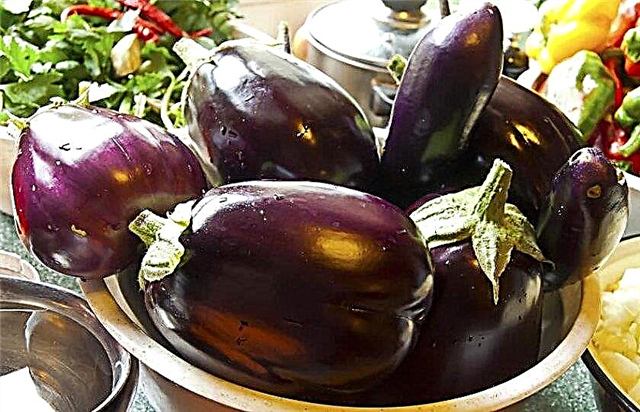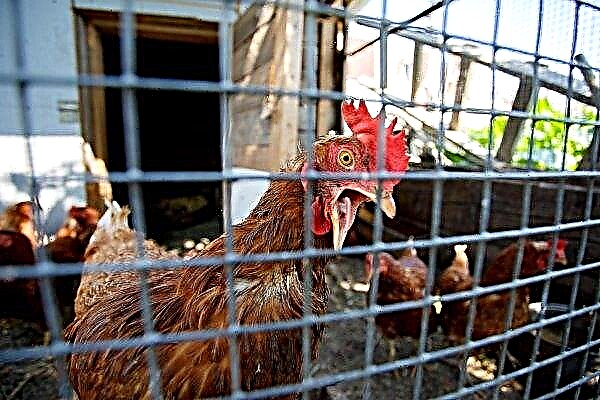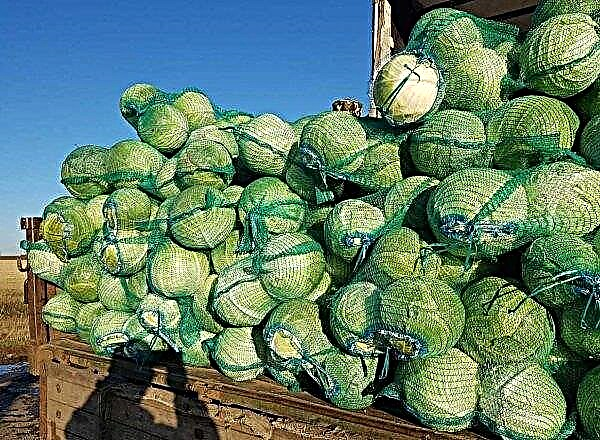Many gardeners grow eggplant in greenhouses. Observing the technological process, agricultural technology and the rules for growing these vegetables, you can get a good harvest. How to collect eggplant in a greenhouse, as well as how to maintain a crop, we will tell in our material.
Growing rules
Being a native of the tropics, eggplant is very sensitive to cold, therefore, to get a high yield, cultivation of this crop is best done in greenhouses. This vegetable compares favorably with other vegetable crops in that its fruits ripen on the bush not simultaneously, but throughout the summer and autumn. .
To get a good harvest of fruits in a greenhouse, where the plant is less susceptible to temperature extremes, wind and frost, you need to know the features of this vegetable and follow the basic rules for growing:
- For better growth and development of bushes, the temperature in the greenhouse is maintained in the range +25 ... + 27 ° С. At lower temperatures, growth and fruiting may slow down.
- When the hot summer days come, the greenhouse where eggplants are grown can be kept open all day.
- The soil for crops should be loose and fertilized.
- Both with insufficient and with excessive soil moisture, the ovaries and flowers may fall, so the plants need to be watered depending on weather conditions (every 7–10 days). During fruiting, water the plants in the early morning 2 times a week, and mulch the soil with a mixture of humus and peat (1: 3).
- Bushes in the greenhouse, as well as in the open ground, need to be tied up, because these plants are tall and fragile, and the abundance of fruits can damage the stems.
Important! Eggplants should be periodically fed with fertilizers. This will make plants strong, resilient and resistant to disease.
Harvesting period
The eggplant development period from seedlings to the production of fruits of technical maturity is quite long (from 80 to 150 days), therefore this vegetable is grown in seedling method.
To obtain crops for a long time, it is necessary to take into account the growing season of this vegetable crop and use early, middle and late varieties for planting. Harvesting is carried out selectively, as the fruits ripen. The ripening time is influenced by factors such as sowing time, seed quality, weather conditions, cultivation errors. During ripening, the fruit is harvested once every 5-7 days, preventing their overriding.
Did you know? In Turkey, eggplant is called the "king of vegetables", as well as the "pear of love." Every Turkish restaurant must have at least one dish from this bright and healthy vegetable on the menu.
Early ripe
Early eggplant varieties not only quickly bring a long-awaited crop (in 90-100 days from the first sprouts), they are even more resistant to low temperatures and lack of lighting.
Among these varieties, the following can be distinguished:
- Fabina F1 - ripening on the 70th day;
- Nadir - the crop can be obtained on the 70–80th day;
- Diamond - the fruits are ready for harvest on the 70–80th day;
- Bibo F1 - ripens in 60–70 days;
- Black handsome - ripening in 70–80 days;
- Robin Hood - matures on the 90th day;
- Valentine F1 - early maturity is 60–63 days;
- Giselle F1 - will ripen on the 100th day.

Mid early
Eggplants of medium early varieties begin to bear fruit in 120–130 days.
Among them, the best are:
- Sancho Panza - ripens in 120-130 days;
- Bull's heart - the crop can be removed after 110 days;
- Black moon - ripens in 120-140 days;
- The namesake - ripens in 120-130 days;
- White night - matures in 100–115 days;
- Alekseevsky - ripens in 110 days.
Late ripening
Eggplant of late varieties will please with ripe fruits after 130-150 days from the time of germination.
The best of them:
- Sophia - ripening on the 135-150th day;
- City F1 - ripens in 120–135 days;
- Bull forehead - ripens on the 140-150th day;
- Teddy bear - fruits can be harvested in 133–145 days;
- Black handsome - maturation occurs after 135 days.

How to harvest and store crops
In determining the timing of the harvest, the fact that the eggplant accumulates the substance solanine during ripening, which gives the vegetables a bitter taste. The stronger the overripe fruit, the higher the content of solanine, so it is necessary to collect eggplant when it reaches technical maturity. The ripe fruit has a shiny glossy surface, juicy elastic flesh and small seeds.
Cut fruits from the bush with a knife or using a secateurs to avoid damage to the stems. The next collection is carried out after about a week, choosing ripened vegetables. Collecting small and unripe eggplants is not recommended, because they do not have a rich taste and aroma of ripe fruits.Important! To get rid of the bitter taste, eggplant needs to be cut, salted. Separated juice should be drained, and the cut fruit should be washed with clean cold water.
To obtain seed material, the fruits are left on the bush until biological ripeness, at which the seeds fully ripen. The collected fruits are stored for up to 15 days at a temperature of +5 ... + 7 ° C and humidity of about 90%. If you slightly lower the temperature (+1 ... + 3 ° С) and increase the humidity (up to 95%), then you can keep the vegetables outwardly healthy and attractive for up to a month.
 For the longest possible storage of fresh fruits, you need to choose late varieties and hybrids.
For the longest possible storage of fresh fruits, you need to choose late varieties and hybrids.
For winter storage, fruits are taken without external damage, with no rot and mold, with a smooth shiny skin. They are placed in boxes, sprinkled with straw or laid with paper and stored in a cool, dry and dark room with good ventilation. Before laying for storage, it is impossible to wash the eggplants, because the natural protective layer is destroyed.
Did you know? During heat treatment, eggplant does not lose its beneficial properties, unlike other vegetables, therefore, from its use, the benefit will be in full.
Gardeners tips
Growing eggplant in a greenhouse, use the advice of experienced gardeners who have personally tested the rules and methods of growing this vegetable crop:
- To increase the fertility of the soil under the beds with eggplant, use mulch: freshly cut grass should be chopped, spread out with a thick layer on the beds, and plenty of water. In the future, make sure that the contact layer of mulch and soil always remains moist. Worms and larvae that feed on dead organics process the grass layer into fertile compost.
- Do not allow the formation of soil crust under the stems of plants. After each watering, carefully loosen the topsoil.
- Eggplant grows well in areas where legumes, carrots, melons and greens grew before. In greenhouses, peppers and cucumbers can be neighbors of eggplant.
- Polycarbonate greenhouses are considered the best, since glass or film ones contribute to overheating and overdrying of air inside.

When growing eggplant in greenhouses, you can get a crop at least one and a half times larger than in open ground, but the plants need to be provided with the necessary care. The result of your efforts will be a plentiful harvest of tasty and healthy fruits.














